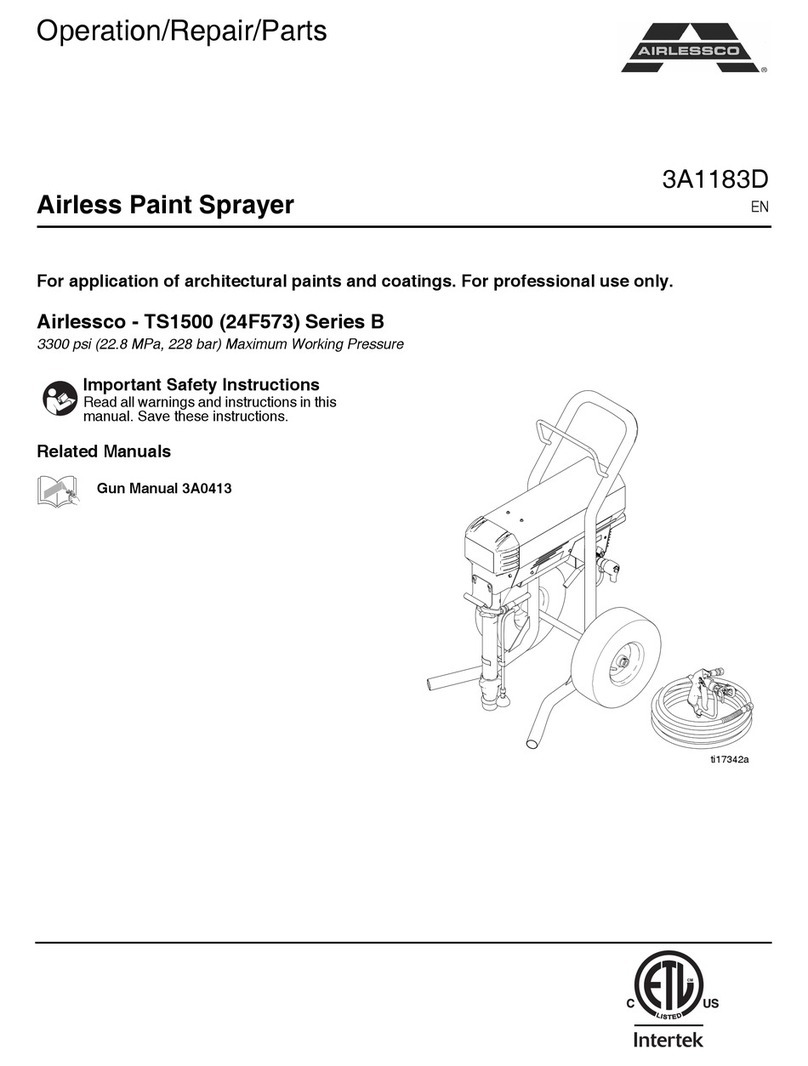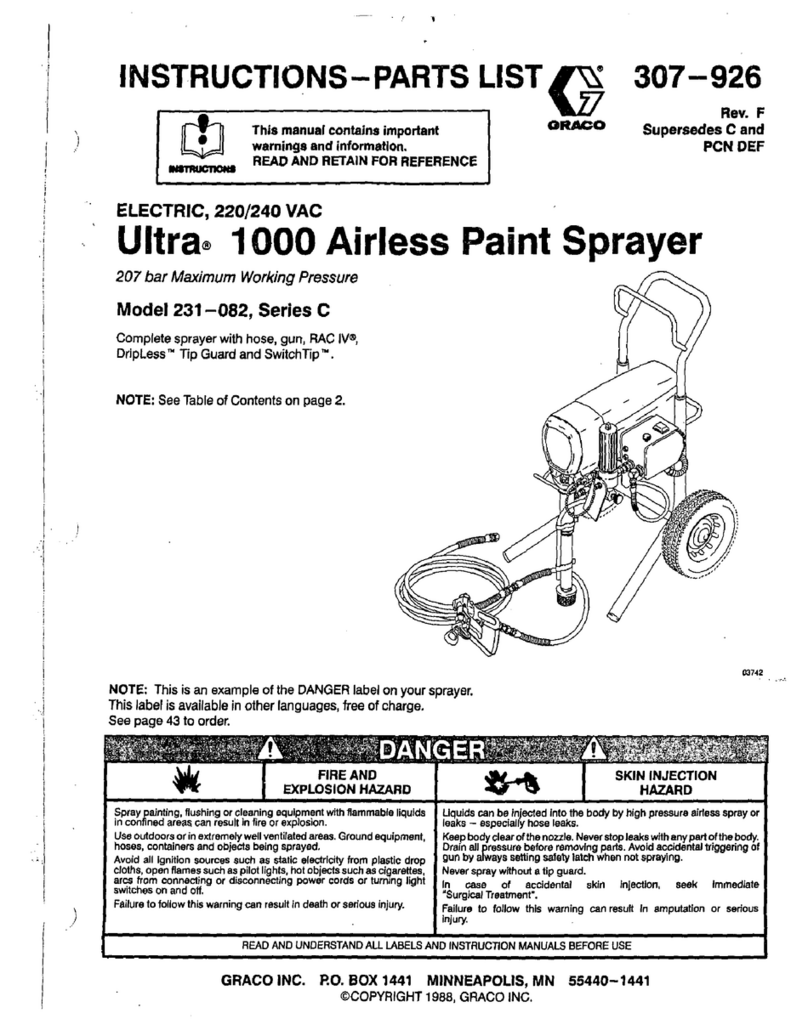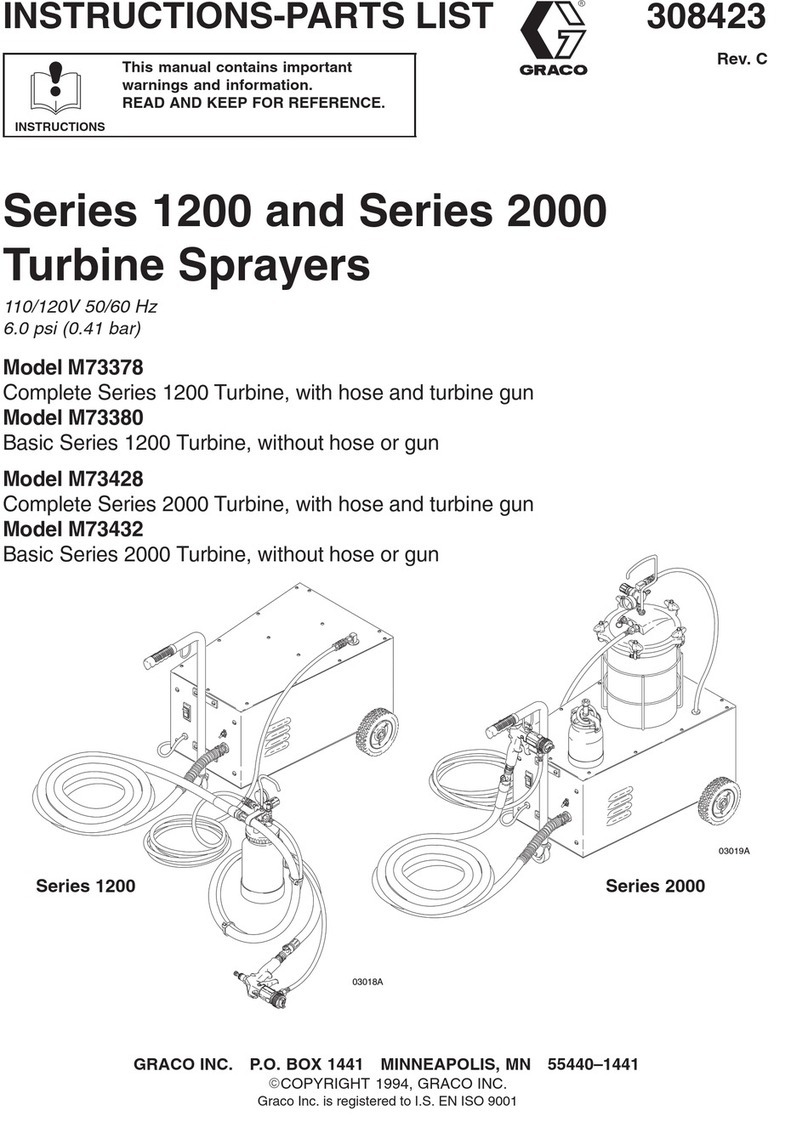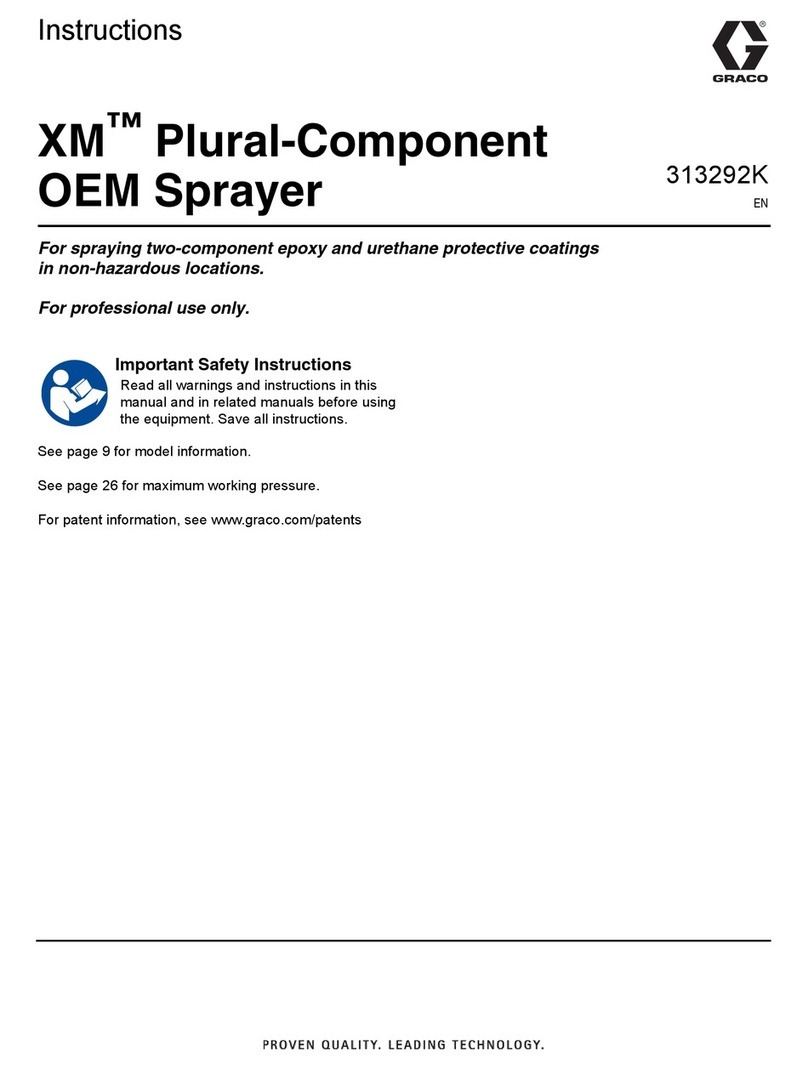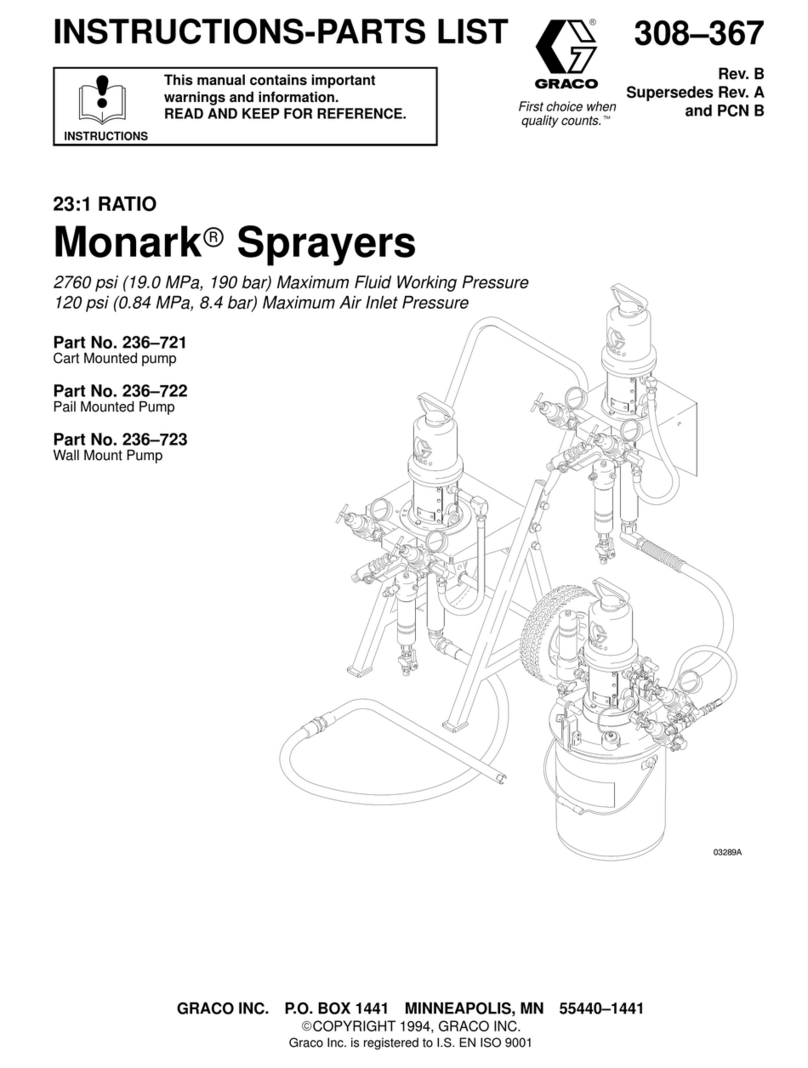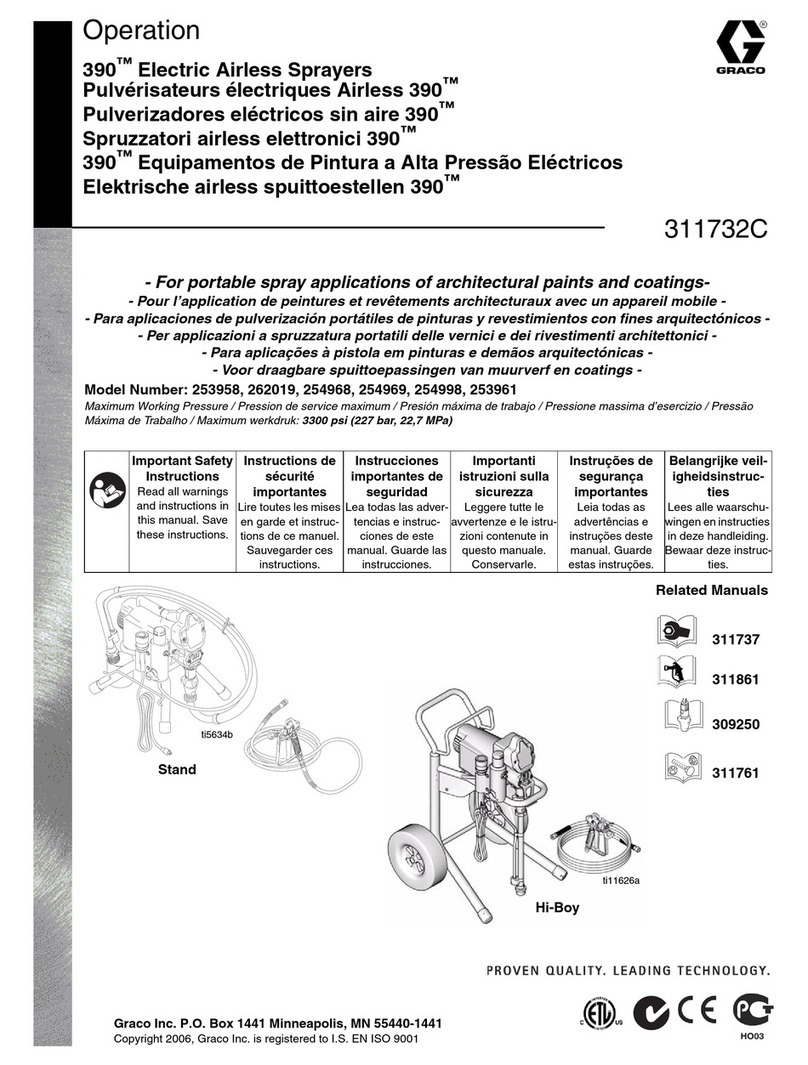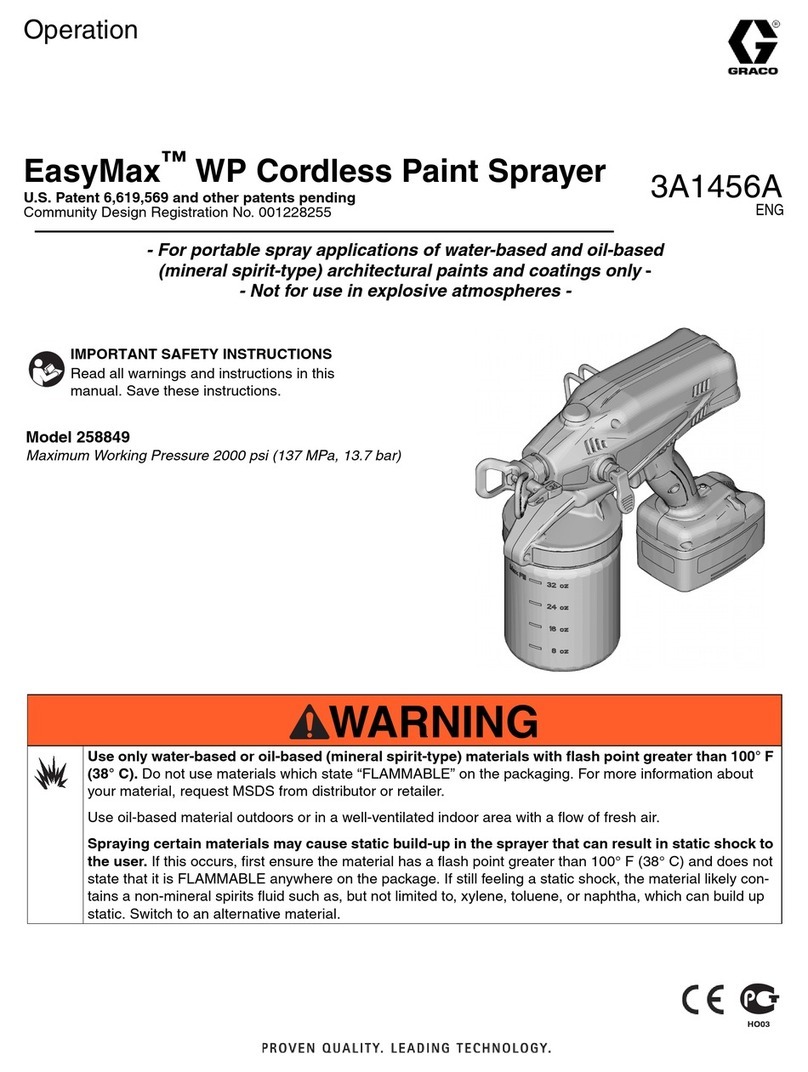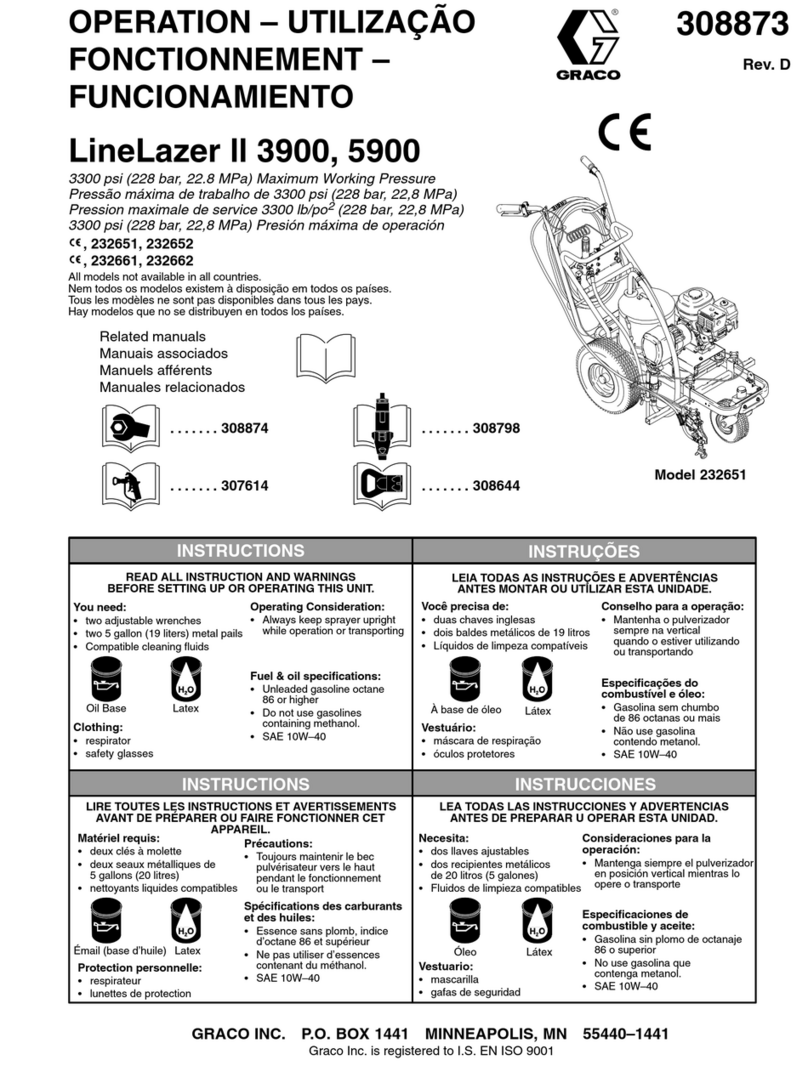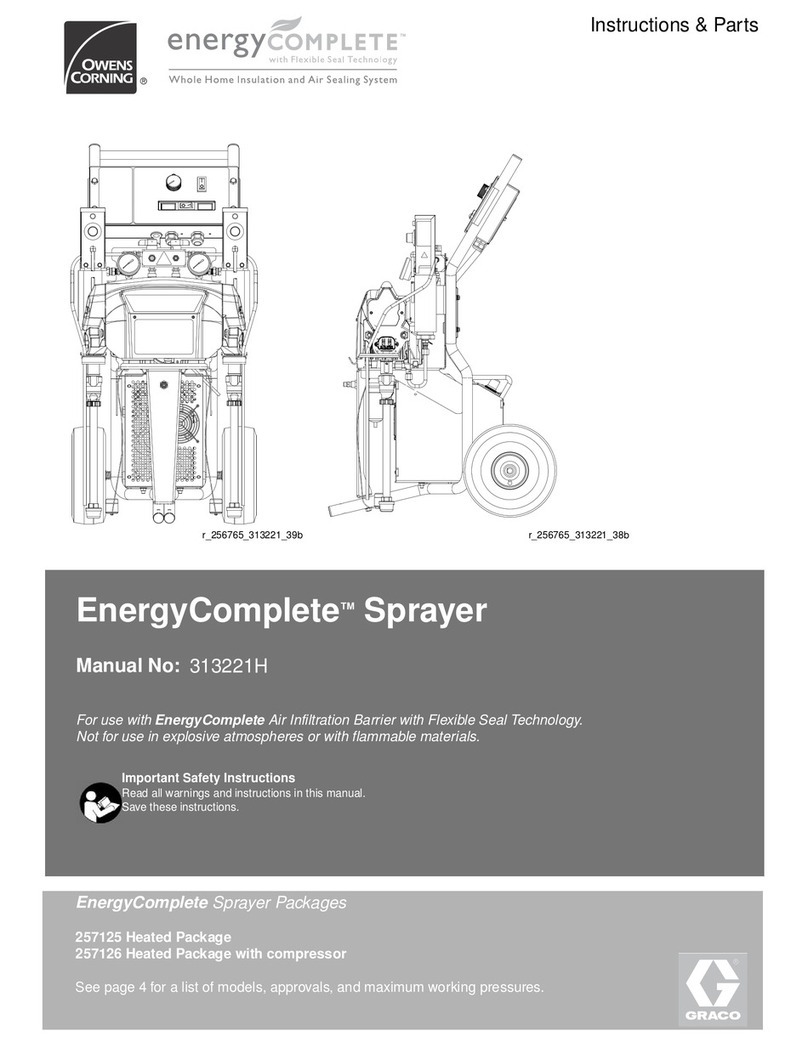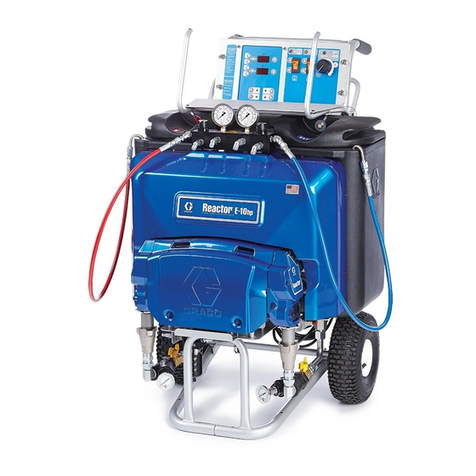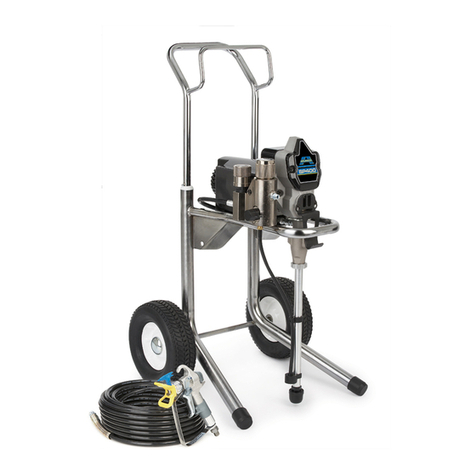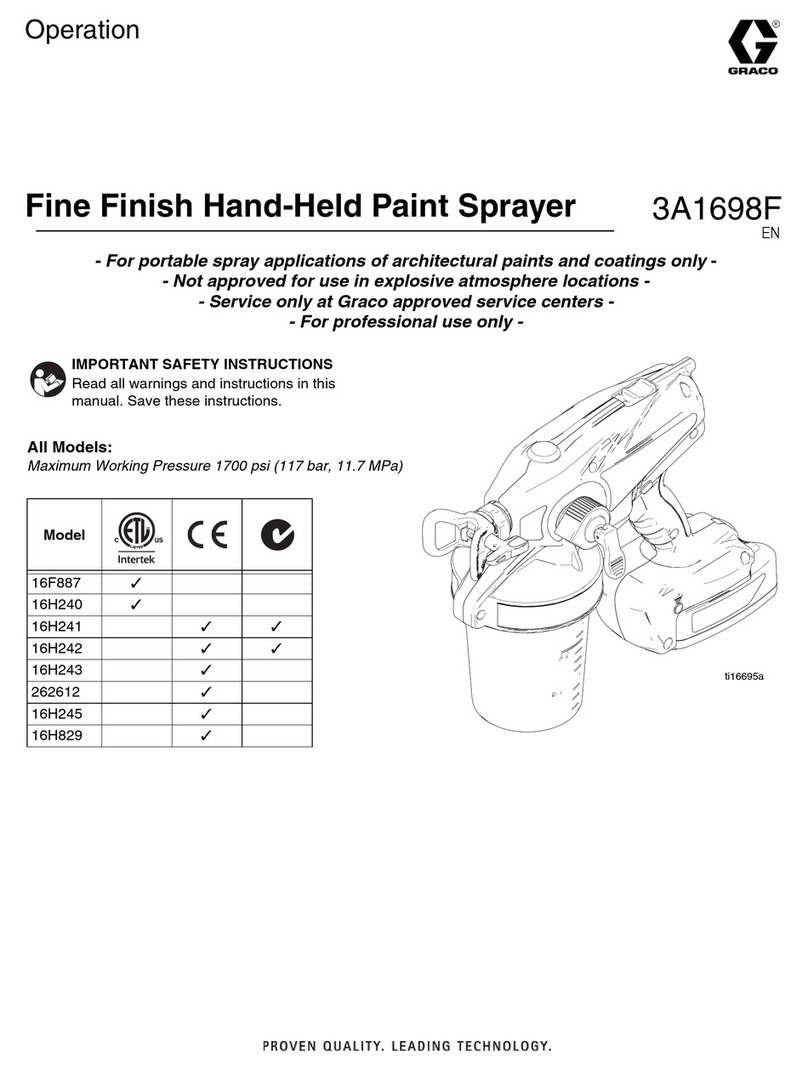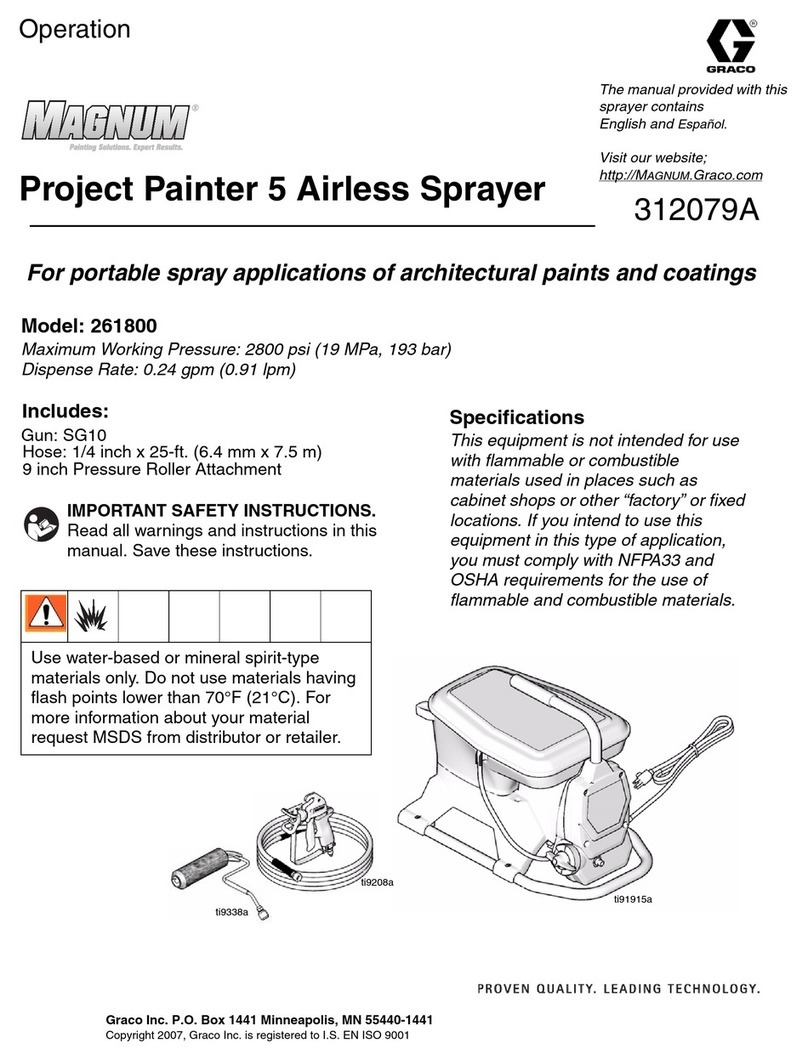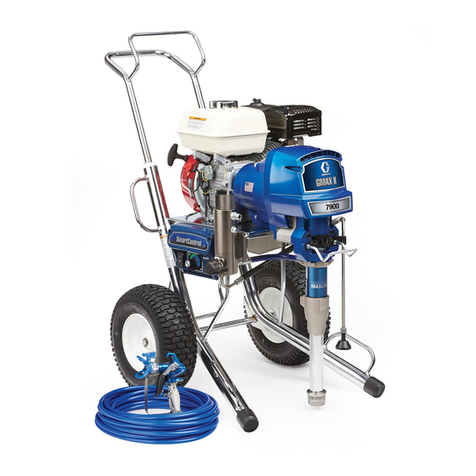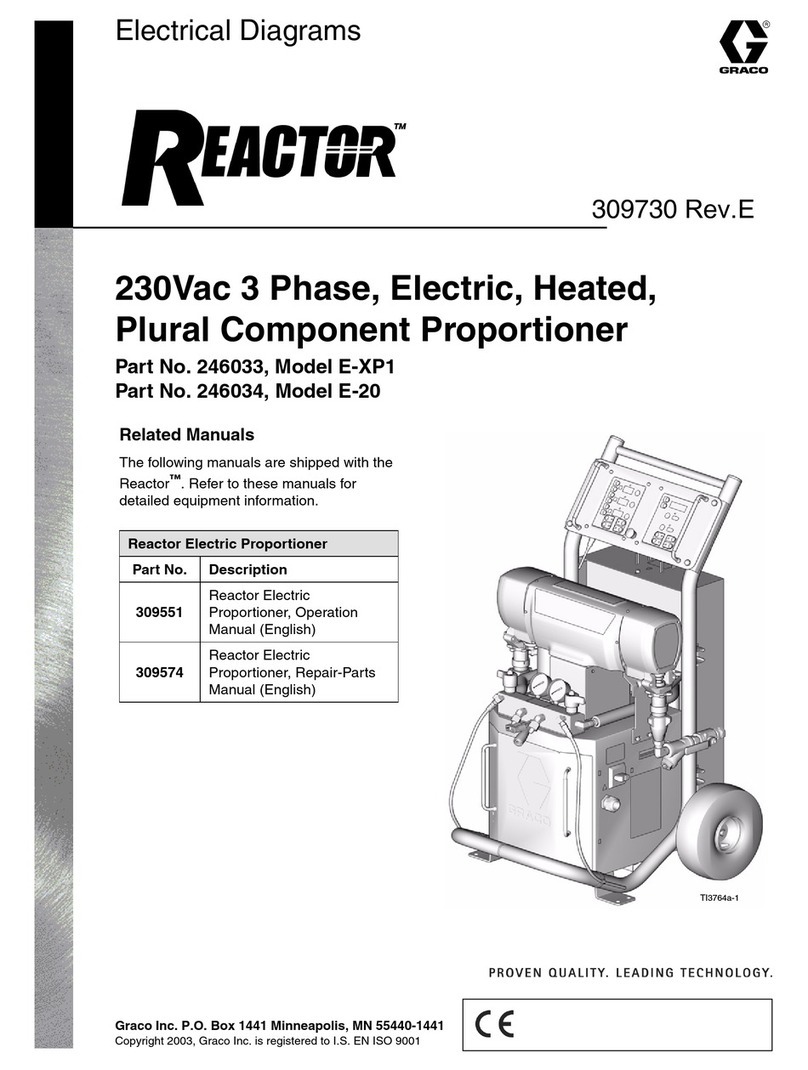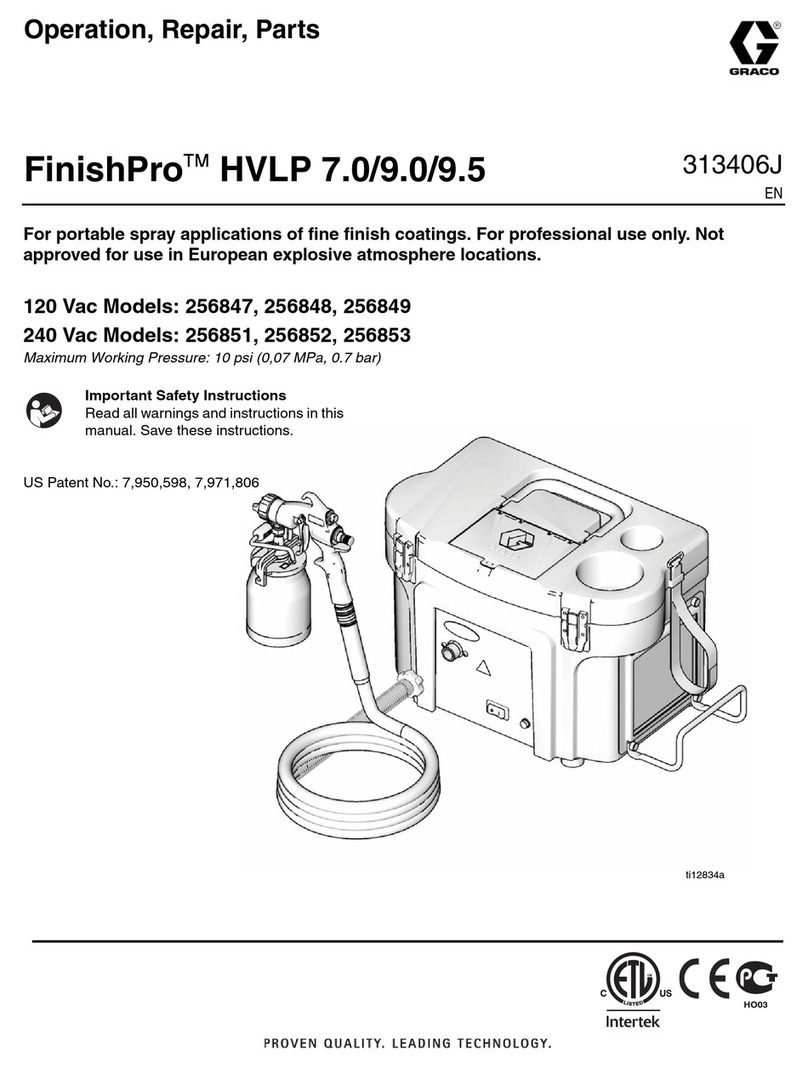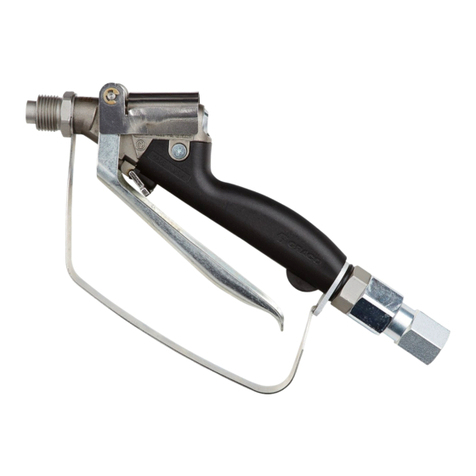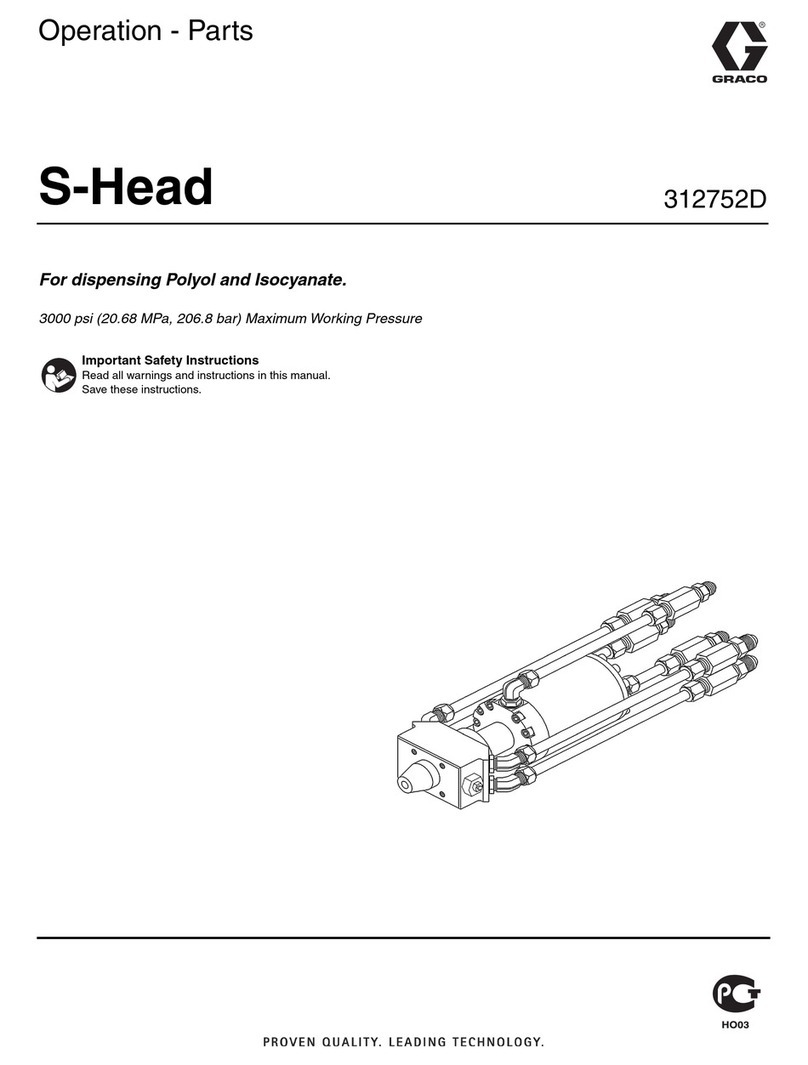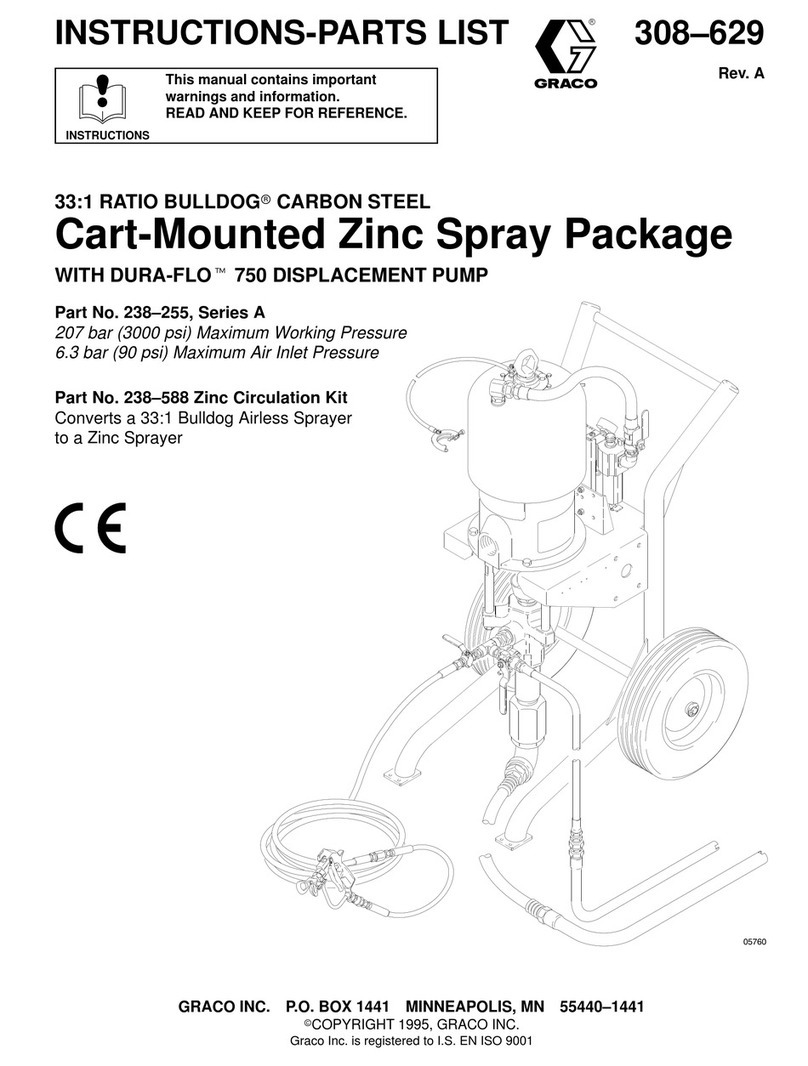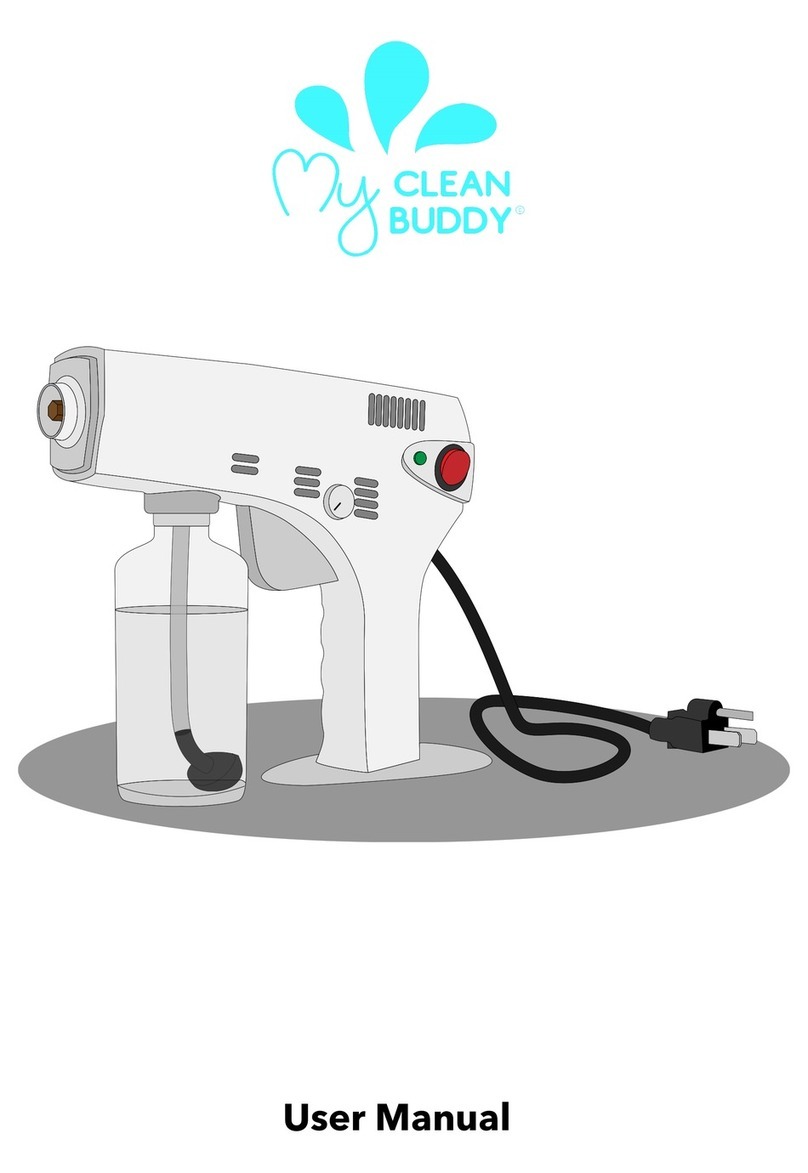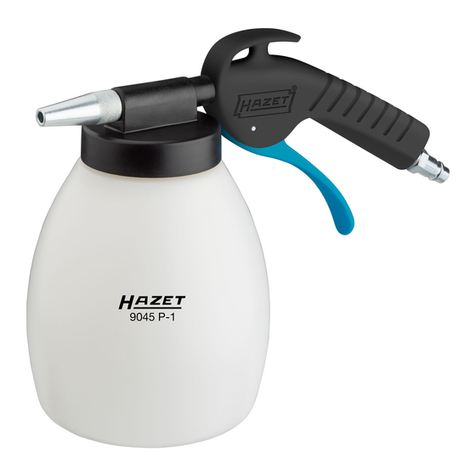
.:.:.::::.:.:.:SAFETY
PRECAUTIONS
0
p@)RuANu
READ
and
UNDERSTAillD~?$i
:.:.:.:.:::::j
...
Federal safety standards have been adopted under the Occupational Safety and Health Act. These standards
--
particu.
with your use of airless spray painting equipment.
larly the Generai Standards, Part
1910,
and the Construction Standards, Part
1926
..should be consulted in connection
i
READ THESE WARNINGS BEFORE USING
KEEP AWAY FROM SPRAY
The ED
250
pumps paint
at
high pressure, up to 3000 psi
(210 bar).
If
you spray yourself
at
close range, the high
physical harm.
pressure stream of paint can pierce your skin and cause
HANDLE
THE
SPRAY GUN AS CAREFULLY AS
A
anyoneelse.
The tip guard can provide additional protection
LOADED FIREARM!
NEVERpointthegunatyourselfor
against injection injuries. Never put your hand, fingers or
body directly over the spray tip.
Always have the tip guard in place while spraying.
Whenever spraying
is
stopped, intentionally or unintention-
ally by
a
plugged spray tip,
always
shut
off
the electric
motor and open the prirninglpressure relief
valve
to relieve
pressure in the system. Then engage the trigger safety.
See
Fig
1.
THIS
IS
IMPORTANT because shutting
off
only
the motor does not relieve the high pressure in the pump,
hose and gun. Also loosen tip guard, gun or hose con-
nections slowly before removing completely for cleaning
or service.
paint.
This
is not an air spray unit;
DO
NOT
try to
"blow
back"
Do not
leave
a
pressurized unit unattended. Shut off the
unit, relieve pressure, engage the trigger safety and pull
out
the electrical plug before leaving.
ALWAYS tighten threaded connections carefully and secur-
ely, and handle paint hose with care. Abuse such
as
sharp
kinking or crushing could damage hose and cause dangerous
high pressure leaks. Check the condition of hoses daily.
Be sure that the hoses, swivels, guns, etc. that you use are
capable of withstanding the pressure developed by this unit
(up to
3000
psi or
210
bar).
doctor.
Do
not treat as a simple cut!
Be
ready to
tell
your
If an injury occurs, seek immediate medical care from
a
doctor or the hospital emergency room doctor exactly
what fluid was injected.
Once
a
year, check the pump outlet pressure. Replace the
page
5
for details.
pump head if
the
pressure exceeds 3600 psi
(250
bar).
See
PREVENT STATIC SPARKING
The
fast
movement of paint through the spray tip may
develop
static
electricity. If
it
sparks, the spark might start
you are using latex paint, but
it
is
especially important to
a
fire by igniting paint fumes. The hazard
is
not
so
great if
guard against static sparking
if
you are using oil base paint
or stain, flushing with solvent or working where flammable
fumes or dust are in the air.
and by only plugging into
a
3-wire grounded electric supply
Be
sure the gun
is
grounded by using conductive paint hoses
circuit. If the object you
are
painting
is
conductive, it must
be grounded also.
Always use the lowest pressure possible when flushing and
flammable solvents, the waste container must be grounded
hold gun firmly against metal waste container. When using
also.
Follow the paint
and
solvent manufacturer's safety pre.
cautions and, warnings.
KEEP CLEAR OF MOVING PARTS
Don't stick your fingers into the slots in the electric motor
fan cover. Always check
to
be sure the switch
is
OFF
before plugging in the power cord.
The electric motor has an overheating protection device
which
automatically
restarts the motor when
it
cools.
So,
shut off the unit, relieve pressure and pull out the electrical
beforeexaminingorworking
on
a
motor which has stopped,
plug.
This
will avoid the hazard
of
the motor starting un-
expectedly.
PLUG
IN
PROPERLY
This
is
an electric machine.
It
has
a
3-prong grounding plug
to protect you from getting
a
shock.
that will accept the 3-prong plug on the cord.
Do
nor
Be sure to plug the unit into
a
properly grounded outlet
remove the
thirdprong.
TO
SWITCH
-AND
MOTOR
=GREEN-TO UNIT
CHASSIS AND
MOTOR
FRAME
GROUND
PRONG
Plug into an outlet
at
least
20
ft
(6
m) from the area where
you are spraying.
If
you
use
an extension cord,
it
must have
3 wires of
at
least
16
gauge, and should not be over
100
ft
long.
I
'I
I
I
I
2
307-279
